AFGHAN COAT
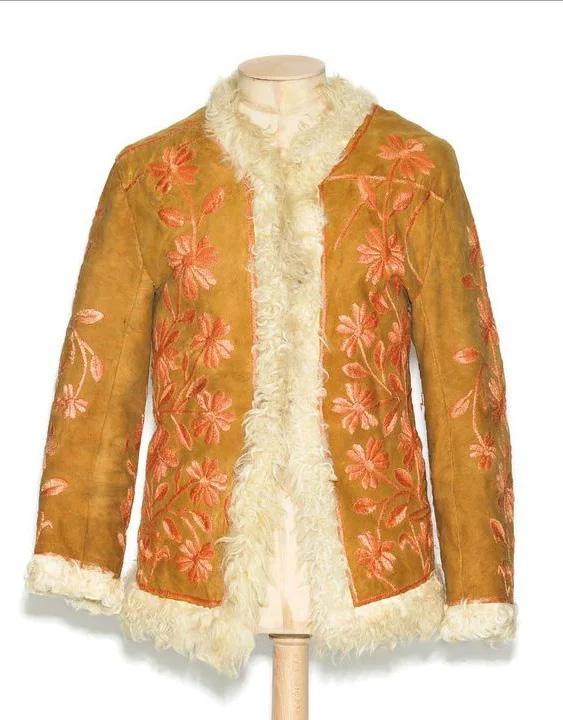


Rebels, Creators, Healers. November 2024
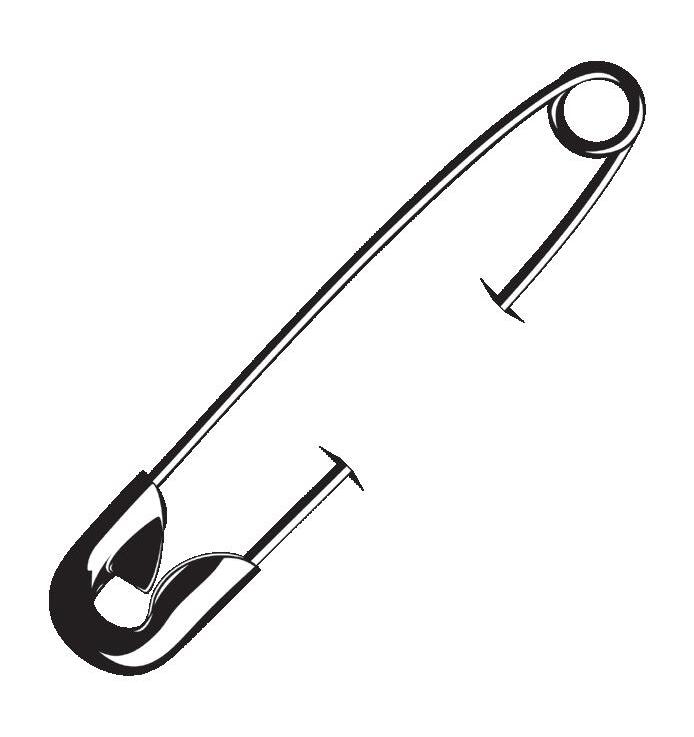
This magazine explores the hippie and punk movements of the 1960s and ‘70s, examining how their music, ideals, and aesthetics sparked social change.
This issue traces how these cultural milestones challenged mainstream consumerism. The first chapter delves into the rise of the hippie movement, a cultural shift that began as a counter-narrative to the post-war consumerist boom. A milestone of this movement was the Woodstock Festival of 1969, which symbolised the intersection of peace, love, and music. Following that, we feature a personal interview with my aunt, Roisin O’Connor Hannigan, whose insights have greatly enriched this publication. I am deeply grateful for her contributions, as she has truly shaped the direction and depth of this issue.
Following the exploration of the hippie movement, we transition to the more rebellious energy of the punk scene. This section highlights how, in the midto late-‘70s, punk rock emerged as a reaction to both the establishment and the culture of the ‘60s. We explore how punk music became a tool for youth to express their dissatisfaction with the world around them.
This issue offers more than just a retrospective on an iconic era in cultural history. As we look back, we also look forward, asking how the radical ideas of the past might continue to influence the future.
both Martin Luther King Jr. and Robert Kennedy, supporters of civil rights, were assassinated. When the U.S. sent more troops to Vietnam, youth wondered how America, a democracy, could allow this to happen. Young males who were sent to fight in Vietnam did not know why they were there. (Bousalis, 2021)
THE COUNTERCULTURE TOOK PLACE DURING A TIME WHEN THE U.S. WAS INVOLVED IN THE VIETNAM WAR, RELATIONS BETWEEN THE U.S. AND THE SOVIET UNION WERE STRAINED, AND SOCIETY SEEMED TO BE FALLING APART. While the u.S. Feared the attack of nuclear bombs, civil rights protests were exploding in the south. Humanity turned violent in 1963 with medgar evans’ assassination, martin luther king jr.’S arrest, and john f.Kennedy’s assassination.
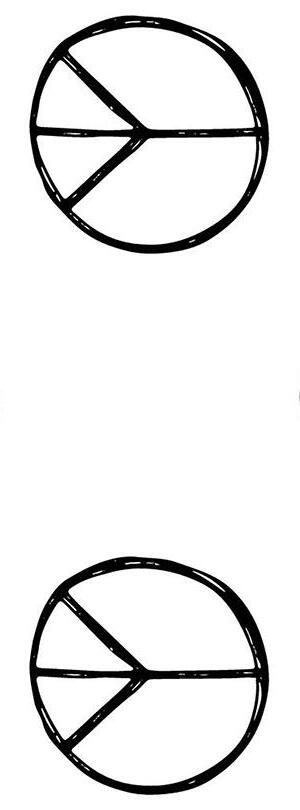
In August 1969, the Woodstock Music and Art Fair took place on a dairy farm in Bethel, NY.
Over half a million people came to a 600-acre farm to hear 32 acts play over the course of four days. Woodstock is known as one of the greatest happenings of all time- and perhaps- the most pivotal moment in music history. (Woodstock, 2019) The concert took place during a time when many young people opposed the Vietnam War and wanted to spread the message of peace and love. Society was slowly becoming segregated between people who supported it and those who opposed it.
(Omie H)
“A successful and peaceful event was the strongest political statement possible”
Photographs by / Elliot Landy
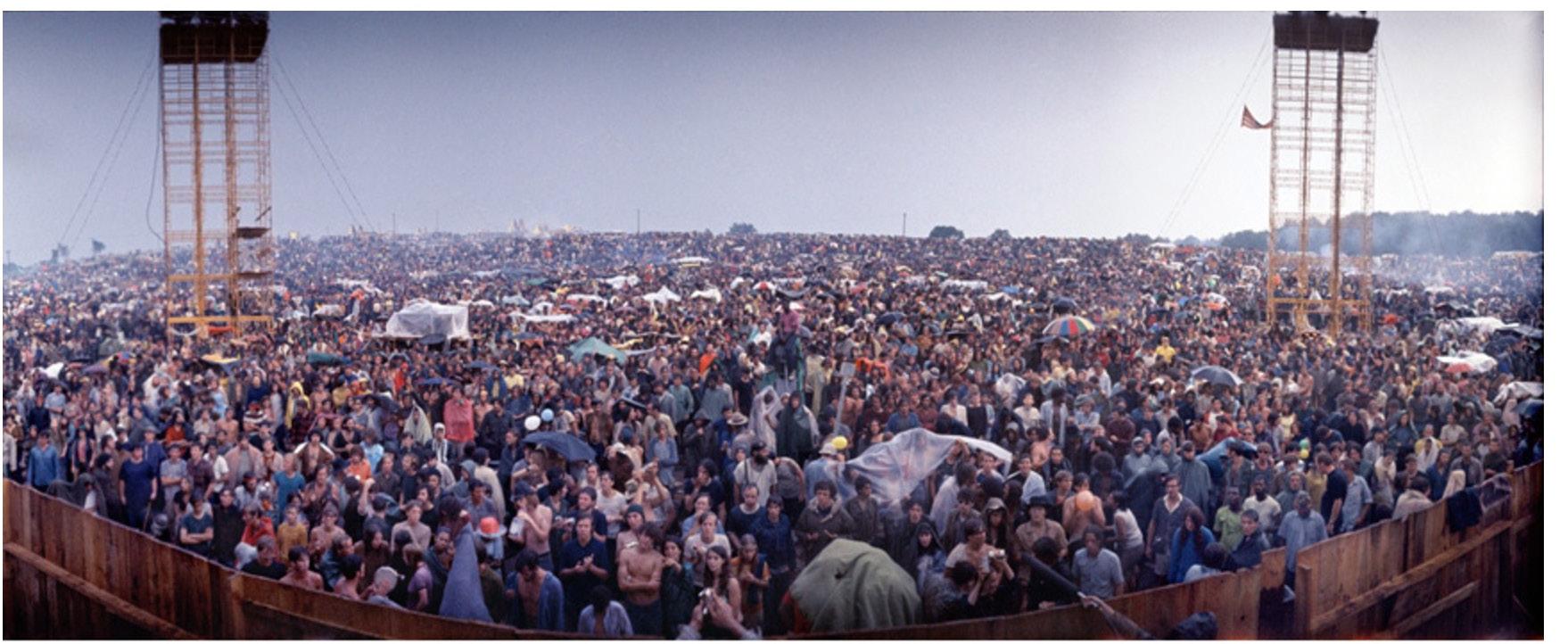
The counterculture of the Sixties represented a challenge to American middle-class values and was inspired in part by the Civil Rights movement and the opposition to the Vietnam War. According to Covach, the counterculture distrusted practically every istitution in American society and searched for and offered alternative lifestyles and philosophies. The generation gap wasnt a novelty itself, as the 1950s had already experienced a youth culture, albeit a less assertive one, but it was the first time in American history that age was the cause for social conflict. Drugs, such as marijuana and LSD, were central to Hippie culture.
Not only was it the decade of music and rock & roll, but also the revival of folk music, which was the anti-establishments first voice for the Civil Rights movement and in denouncing the Vietnam War. Many songs byblack artists were influenced by the tribes, where experimental new lifestyles would be respected and accommodated, thus creating a new paradigm in festival events.
Michael Lang began booking musicians for the festival. The first bands to be booked were Jefferson Airplane, Creedence Clearwater Revival and Canned Heat. For Lang, Woodstock was not intended to be about any one band or group of bands. It was about the people and the ideas and music interwoven through their lives. Kornfeld and Lang envisioned Woodstock mainly as a cultural event,although not one devoid of politics, Pedro Jorge Duarte Silva Ramos believed that a successful and peaceful event was the strongest political statement possible.
In order to get their message across to the counterculture, a discussion between political groups was held in New York on 26 June where it was decided that Woodstock would remain a peaceful and cultural event and politics would be represented in booths in an area namedMovement City (Lang 96-98).
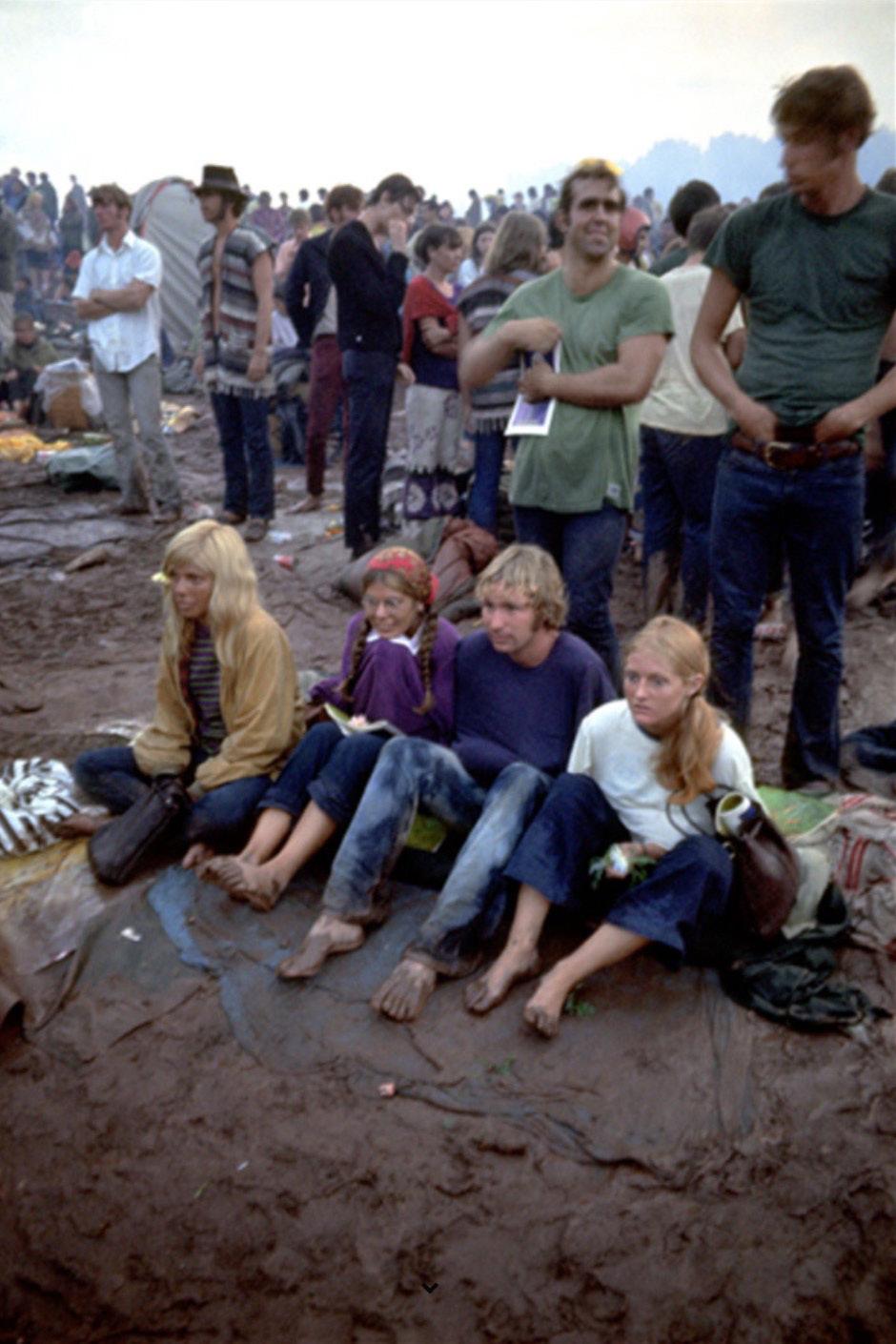
Performing at the Woodstock Festival in Bethel, N.Y., Aug. 18, 1969. (Larry C. Morris)
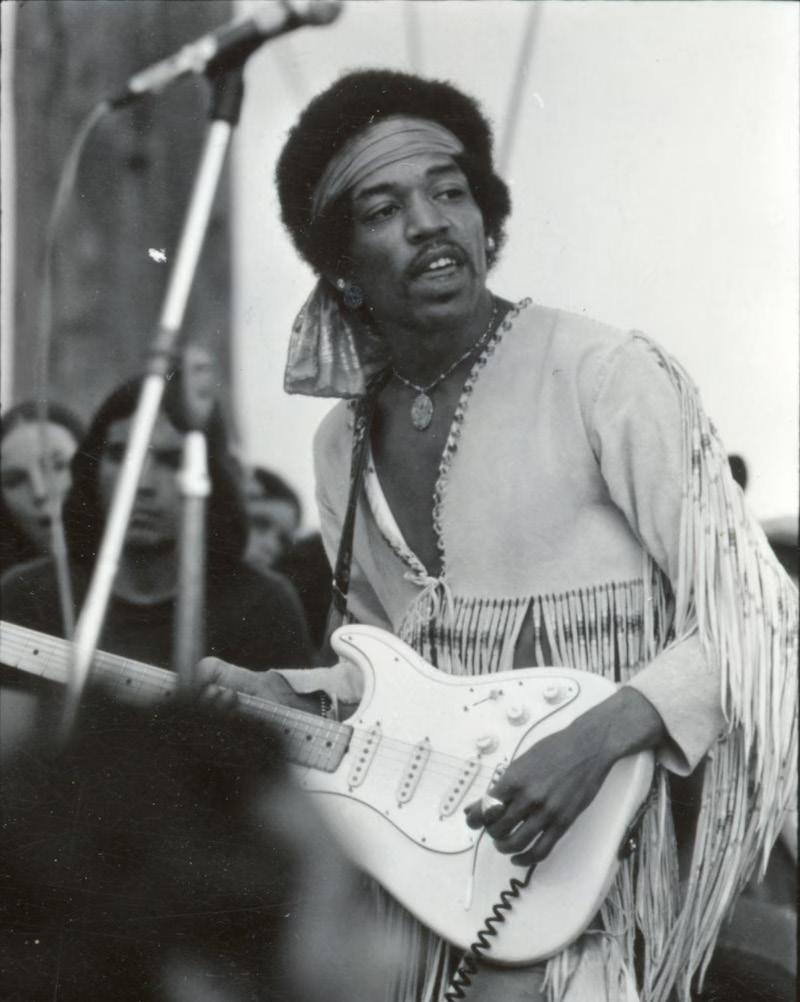

In an exclusive interview with Roisin O’Connor Hannigan in October 2024, O’Connor reflects on her life experiences- specifically during the 1960s and 70s, when consumer values were shifting. This was not just a historical time for Roisin, it was a big part of her life, and it still is today. This movement shaped her personal style and views on consumer culture. It’s clear, from talking with Roisin, that the counterculture movement didn’t just challenge society “norms”, it also changed how people viewed fashion and themselves. What you wear reflects who you are and what you want to become.
Roisin’s reflections on her life and style during that time are a bridge between the past and today’s ongoing issues surrounding consumerism and sustainability. The hippie movement had a focus. They rejected mass production and embraced individuality which all seems incredibly relevant today. This interview gives us a reminder that the journey towards self-expression in the 60s and 70s leads us to be more mindful in what we consume today.
Hello Roisin, what role did the clothes you wore play in your identity during the time of the hippie movement?
When I lived in Tramore, there was a hippie vibe in the air. I was particularly drawn to the long-haired, guitar-playing guys who sat cross-legged outside the local ballroom, listening to bands like Led Zeppelin and Santana. They wore bohemian-style clothes—long tunics, beads, open-neck t-shirts, and various styles of hippie trousers, often floral or patterned. It was a lifestyle I admired and wanted to be part of.
When my exam results came out, my parents asked me what I wanted as a gift, and all I could think of was a maxi coat. I had become obsessed with looking at London fashion magazines, where maxi coats were all the rage. It looked amazing on the six-foot models in the fashion magazines. I refused to give in to the reality of it and wore it anyway. I also remember my time at the convent school in Waterford for young ladies. The school was very strict about the uniform, but I felt incredibly restricted, especially by the tie. To break up the monotony, I would wear surf beads right at the base of the tie. A small act of rebellion, really. A group of other non-conformists wore the beads too. We became known as the “Tramores”.
Q How did the clothing choices you made reflect the values of that time?
When I went to college at UCD, I had very few clothes. I had only two pairs of jeans and a few hoodies, none of which really reflected my style. So, I took matters into my own hands. I cut the outer seam of the jeans and, with an old pair, cut out a triangular shape and sewed it into the sides to create wide flares. I also embroidered flowers on them, adding a touch of colour. I got all my denim inspiration from Wrangler. I loved the brand but I could never afford it. It was my way of expressing myself when I didn’t have much to work with! When I arrived at UCD, I had my first real encounter with the hippie community. I had always been drawn to the style, but this was the first time I was surrounded by these larger- than -life characters. I was fascinated by their vibrant, colourful way of living. I was terrified of drugs, so in that sense, I wasn’t a “true hippie”—but I never felt the need to conform to a set idea of what a hippie should be. I always painted yellow or lime flowers on my face and wore green eyeshadow to express myself.
1
9
7
2
Wrangler 27MW Denim Shirt From The 1970s
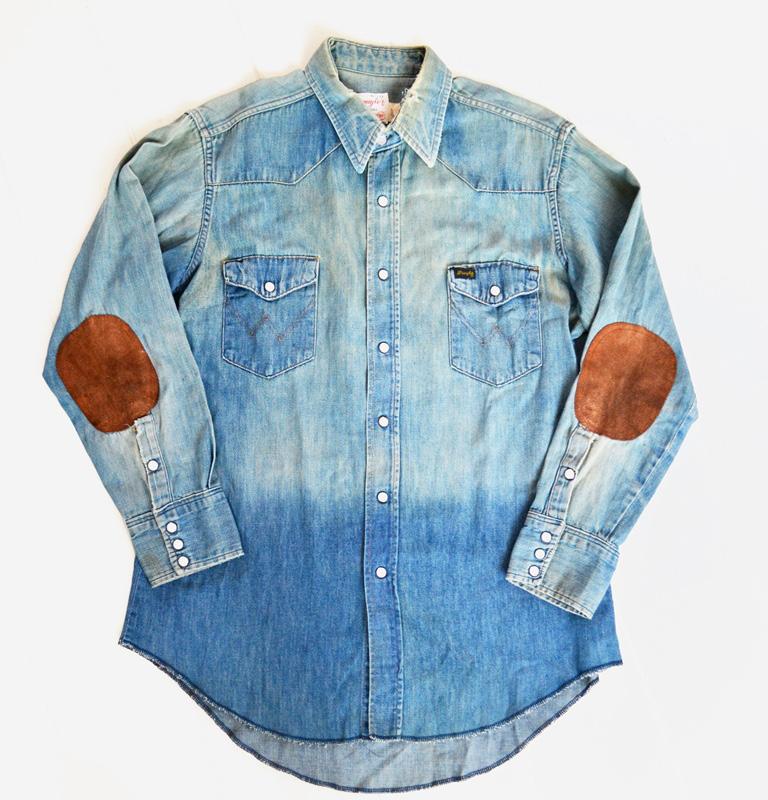
Q What were your views on consumer culture during that time?
In the 1970s, Ireland was still a poor country, and much of life felt quite dull and grey, almost as if it were in black and white until the early ‘90s. Socialising was very limited back then. We’d go to the local dance hall, where a band would play. People lived in modest homes, drove modest cars, and there wasn’t much emphasis on material wealth. It wasn’t until later that consumerism really took off in Ireland. Some people, however, aspired to more—those were the ones who bought the fancy cars and built big houses.
I got married in 1977, and the traditional Irish wedding at that time was extravagant. I had my wedding at the local hotel, though I never imagined myself walking down the aisle in a big, elaborate dress. I had always envisioned a smaller, more intimate wedding at the university church in St. Stephen’s Green, followed by a celebration at my favorite restaurant. While this would be considered perfectly acceptable now, back then it was completely unheard of. This is just another example of how I’ve always been a bit of an outsider, someone who doesn’t always conform to tradition.
Q Did you have a particular style you liked wearing?
One of the most special items I ever wore, which was a big part of the hippie movement, was an Afghan coat. These coats were made from thick fabric and had sheepskin trim around the sleeves, collar, and down the sides. They were also beautifully decorated with intricate embroidery. It was a statement piece, and I loved how it reflected the free-spirited, artistic energy of the time. Jimi Hendrix was a huge style inspiration for me at the time.
Q Is there any moment that stands out from that era of your life? This could be your social life, the clothing you wore or the music you listened to. I’ve always loved Bob Dylan, Leonard Cohen, and just about any kind of punk music. There’s something about that music that really spoke to me. To me, being a hippie is about being part of a counterculture and not just following the crowd. It’s about having your own strong opinions and beliefs, and living by them. My philosophy has always been to keep life simple. Surround yourself with the things and people that really matter to you. I remember going to a concert years ago, feeling completely immersed in the music and the energy of the crowd. It was more than just the tunes, it was the sense of community, the shared spirit of freedom and individuality that made it so special.
Now, I live alone in the countryside with my dog, and honestly, I couldn’t be happier. My life may be quieter, but it’s exactly the way I’ve always wanted it—peaceful, simple, and true to who I am. If I am remembered for anything, I hope it’s for having my own unique style and for expressing myself through what I wear. I firmly believe that you should use clothing—and even the way you decorate your home—as a way to communicate who you are. I’ve never been one to follow strict rules or conventional thinking. style inspiration for me at the time.
“I got all my denim inspo from Wrangler.”
Through stylin’, Hendrix, wished to assert himself, make himself respected – be it noted, respect in the original sense of respicere, viz. to ‘cause people to look back or behind,’ ‘look back upon’ or ‘look at once more.’ He did not put on just any uniform jacket, but a hussar’s pelisse with lavish gold braiding well suited to inspire respect. Perhaps as a way of alleviating doubts he had about his singing voice and – hard though it is to believe his musicianship. Perhaps he also meant to signal authority, by projecting a strong and well-defined sense of self; thus, a power statement, or, at any rate, a bid for empowerment.
A way for Hendrix to define himself in opposition to an inferior countertype to the Western masculine ideal, and escape being cast as a black outsider.
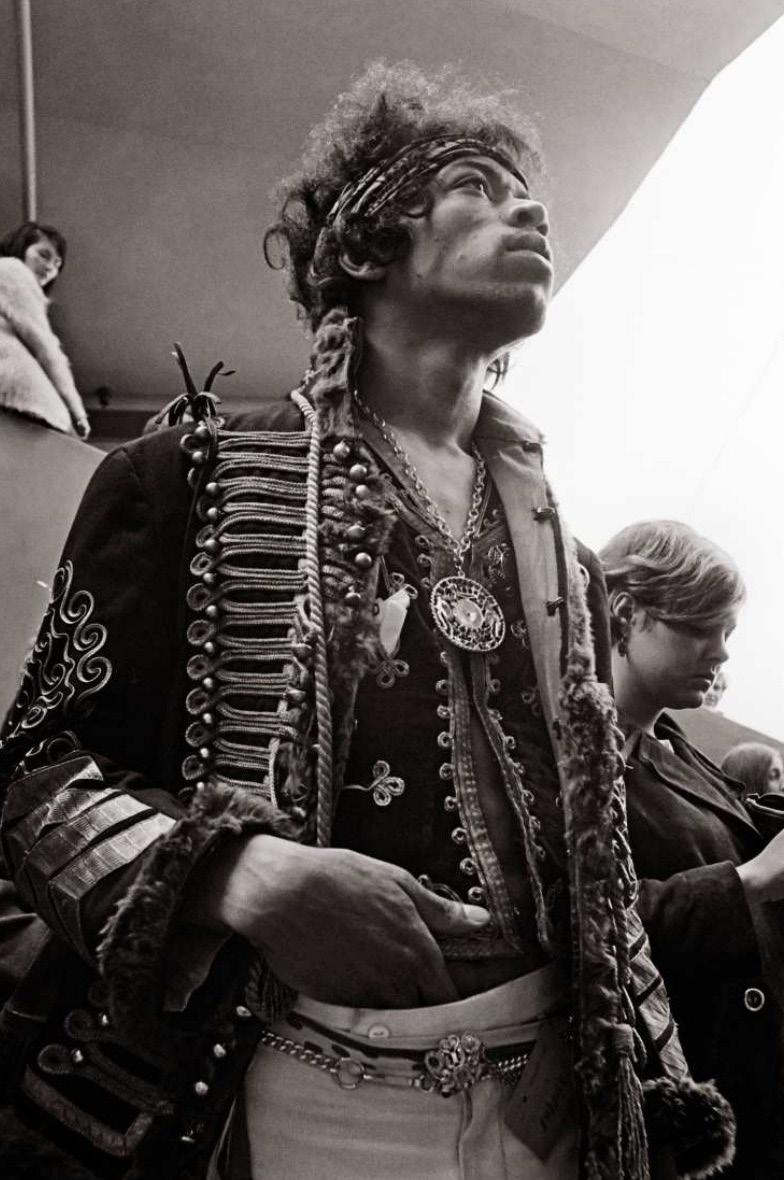
“Punk’s main philosophy centered around the idea of shock value accentuated by anti-establishment ideals.” Punks were contemptuous of the society around them and attempted to create a more ideal and honest environment that was not hooked on the status quo. The original punks took everything to the extreme: their clothes, their hair, their drugs, their music, and their behaviour.
They were a youth subculture based on doing the complete opposite of every acceptable thing they could think of. They picked the most horrific elements of the past and incorporated symbols of those horrors into their style. They were anti-racist, yet wore swastikas and Nazi armbands. They were anti-religion, yet wore crosses. They mixed symbols and styles to shock and horrify onlookers. Punks hung out at railroad stations and bus stops so that “normal” society would see them. Their statement was to be seen and to stand in the face of tradition in order to mock it.
Bridge 2
When there's no future how can there be sin?
the flowers in the dustbin
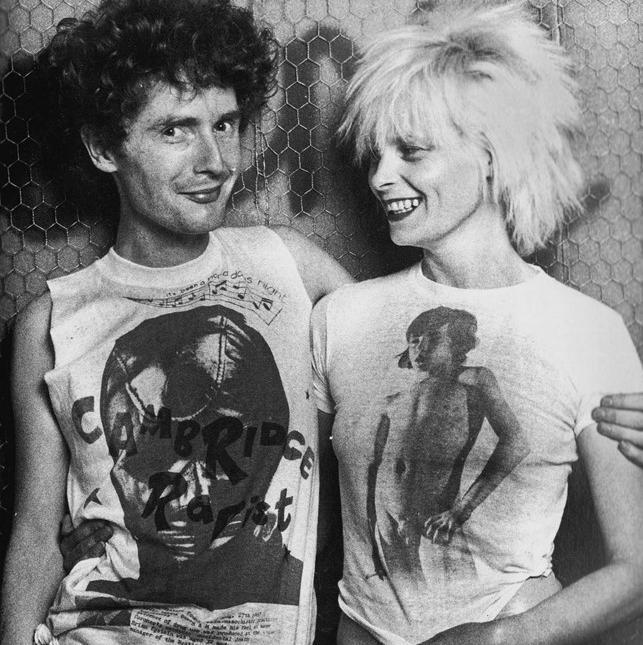
The fashion of the punks’ ties in very heavily with the political stance. Punk started out in very conservative countries like the UK and US, the norm for people was very clean cut and well dressed, and anything other than that was strange and unusual. It was Vivienne Westwood and the Sex Pistols who brought punk fashion to how it was. Punks wore old torn clothes held together with
safety pins, sewing zippers and patches onto jackets and pants, cutting, dyeing, and spiking their hair in wild styles idea, wearing old torn clothes held together with safety pins, sewing zippers and patches onto jackets and pants, cutting, dyeing, and spiking their hair in wild styles.
(Rock, 2022)
Vivienne Westwood:
Words by Odunayo Ojo
Westwood’s provocative designs reflected the political unrest at the time. Her work was anti-establishment at its core, to the horror of the general British public who complained about a bunch of misfits who paraded around London. “I was so upset with what was going on in the world,” she said. “I just couldn’t stand the idea of people being tortured and that we even had such a thing as war. I hated the older generation, who had not done anything about it. Punk was a call-to-arms for me.
Her design of distressed t-shirts with bold red Nazi swastikas, inverted images of Christ on the cross, the word “DESTROY” and Sex Pistols lyrics was a reference to dictators around the world who had committed atrocities and major crimes against humanity. It was meant as a middle finger to what they represent and a declaration against the symbols that characterised them.
“I was so upset with what was going on in the world”
Her designs became prominent due to the rise in popularity of the Sex Pistols, a ‘70s punk rock group managed by Malcolm McLaren and consisting of customers and workers of the SEX store on 430 King’s Road. They acted as muses for the boutique, wearing the clothes to gigs where they would regularly do controversial things that landed them in the tabloids.
The Sex Pistols would later separate, and Westwood turned her focus to building her name as a designer. She presented her first show at London Fashion Week for the AW81 season with a col-
The Sex Pistols would later separate, and Westwood turned her focus to building her name as a designer. She presented her first show at London Fashion Week for the AW81 season with a collection titled “Pirates.” This collection would become known as one of her most iconic showings.
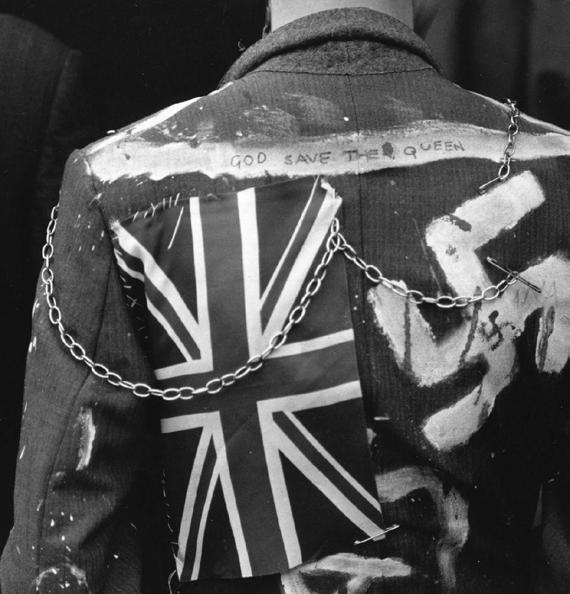
At the heart of early punk was calculated anger. It was anger at the establishment and anger at the allegedly soft rebellion of the hippie counterculture; anger, too, at the commodification of rock and roll (Cullen 1996: 249). Its politics were avowedly apolitical, yet it openly and explicitly confronted the traditions and norms of the powers that be. Describing the cultural milieu for young people in 1975, Greil Marcus notes the centrality of cultural production: ‘For the young everything flowed from rock ‘n’ roll (fashion, slang, sexual styles, drug habits, poses), or was organized by it, or was validated by it’ (Marcus 1989: 53). But by the early 1970s, with commodification in full swing, with some artists said to have compromised their integrity by becoming rich stars, and with ‘rock’ having been integrated into the mainstream,some people felt that youth subcultures were increasingly a part of the intensifying consumer society, rather than opponents of the mainstream. Punk promised to build a
The Last Subculture Words by Dylan Clark
scene that could not be taken. Its anger, pleasures, and ugliness were to go beyond what capitalism and bourgeois society could swallow. It would be untouchable, undesirable, unmanageable. Early punk was a proclamation and an embrace of discord. In England it was begun by working-class youths decrying a declining economy and rising unemployment, chiding the hypocrisy of the rich, and refuting the notion of reform. In America, early punk was a middle-class youth movement, a reaction against the boredom of mainstream culture (Henry 1989: 69). Early punk sought to tear apart consumer goods, royalty, and sociability; and it sought to destroy the idols of the bourgeoisie. At first punk succeeded beyond its own lurid dreams.
The Sex Pistols created a fresh moral panic fuelled by British tabloids, Members of Parliament, and plenty of everyday folk. Initially, at least, they threatened ‘everything England stands for patriotism,class hierarchy, ‘common decency’ and ‘good taste.’ When the Sex Pistols topped the charts in Britain, and climbed high in America, Canada, and elsewhere, punk savoured a moment in the sun: every public castigation monly convinced more people that punk was real.
Punk’s rebellious energy came out of the hippie movement’s failure to maintain its countercultural ideals, as the dreams of the 1960s gave way to consumerism and political apathy in the 1970s. The hippies sought peace so punk rejected it.
Consumer voyeurism is much more
offensive to punk sensibilities than song themes about addiction or slaughtering dolls onstage (Van Dorston 1990).
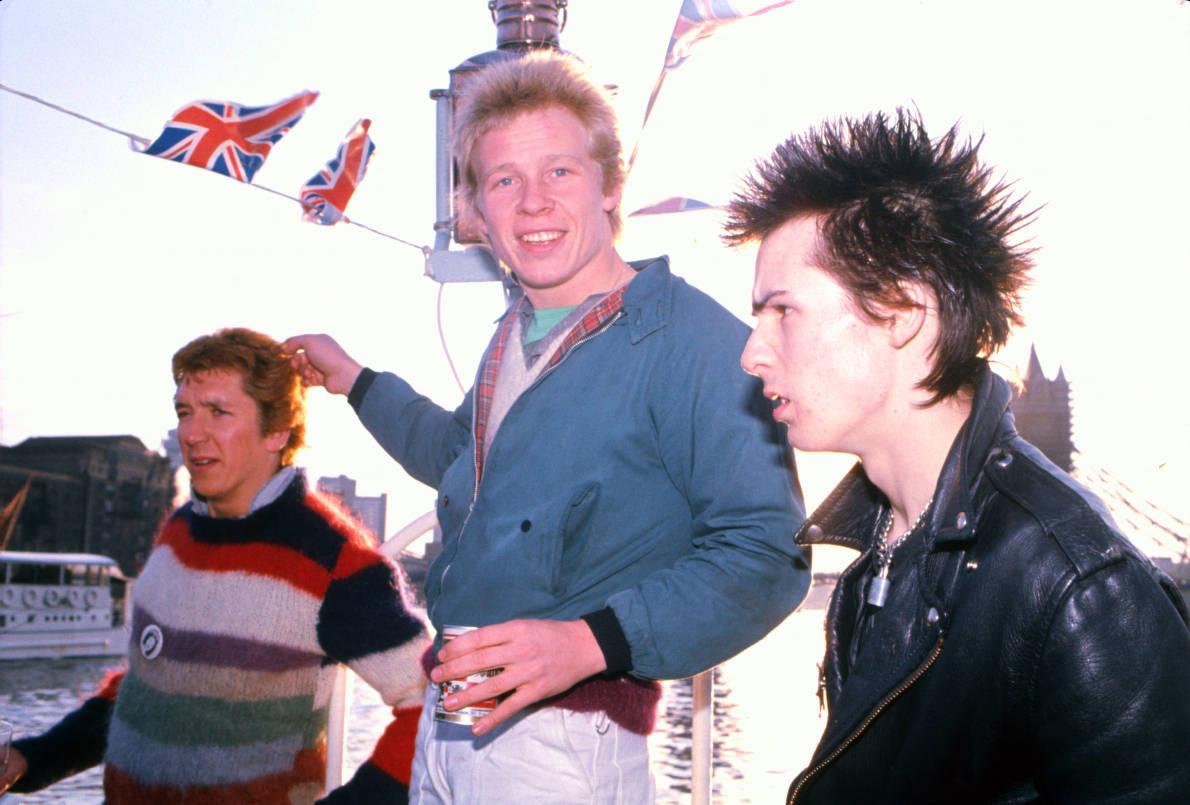
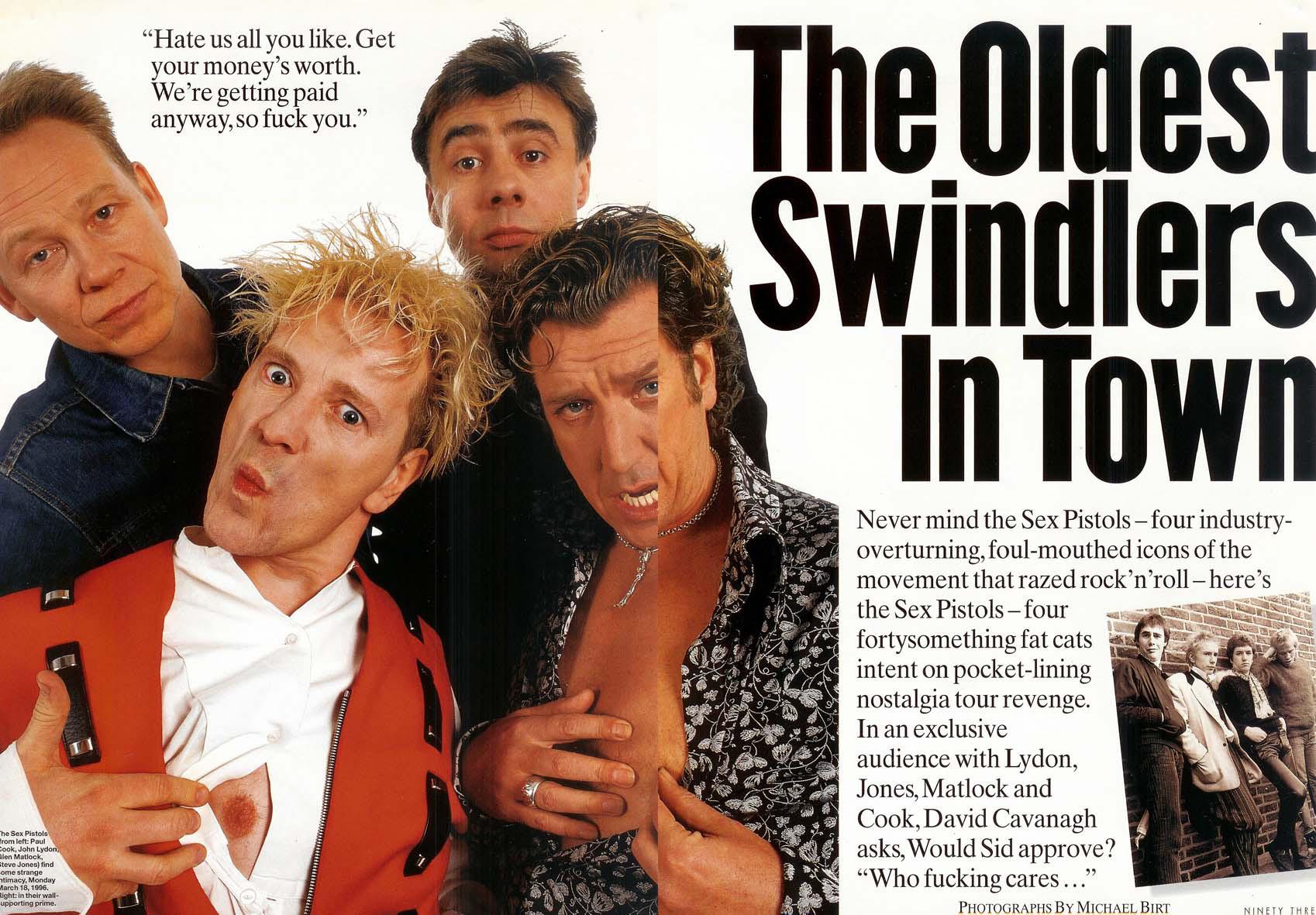
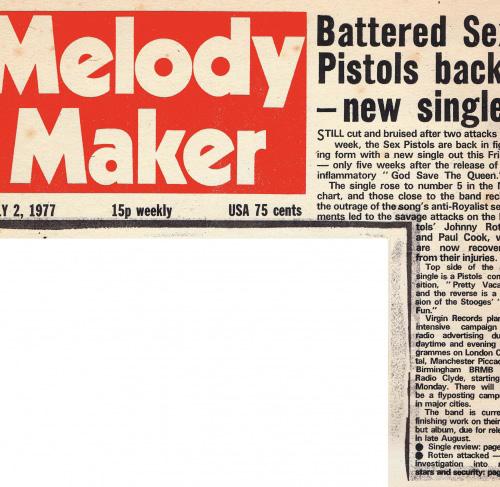
MARTIN SMYTH
‘The letter reproduced below was sent to me by Mr Ly-
don in early 1978. I was a 12 year old schoolboy besotted with punk in general and the Pistols in particular and decided to write a letter to John expressing my feelings about the band. Even given my tender years I was aware that punk was something that was going to have a massive impact on my life. Now in middle age I can truly say that punk and the ideas behind it have been my single biggest influence and something that I still draw a lot of inspiration from.
I wrote the letter towards the end of 1977 after the release of the Bollocks album when all seemed fine and dandy with the band! John very kindly took time to reply sometime shortly after the disintegration in America. I clearly remember the letter arriving as I was getting ready to go to school one day early in 1978. I took it to school and most of my friends seemed to think it was something I had put together myself!! A few years ago the original letter turned up for auction at Sotheby’s. How did it end up in Sotheby’s?? Sometime in the mid 80’s when I was doing a fanzine, putting on gigs and being fairly involved in the music scene in Belfast, I had a bit of a cash flow problem and a local record dealer offered me (what I thought was a fairly tidy sum) for the letter and I foolishly decided to sell it! It was some time after that I discovered the letter had been sold for a large sum of money at the London auction house. 30 years later I realise that off loading the letter was not one of my better moves. The actual content of the letter is incredible. John’s honesty shines through and it does give an insight into his state of mind in early 78’ June.”
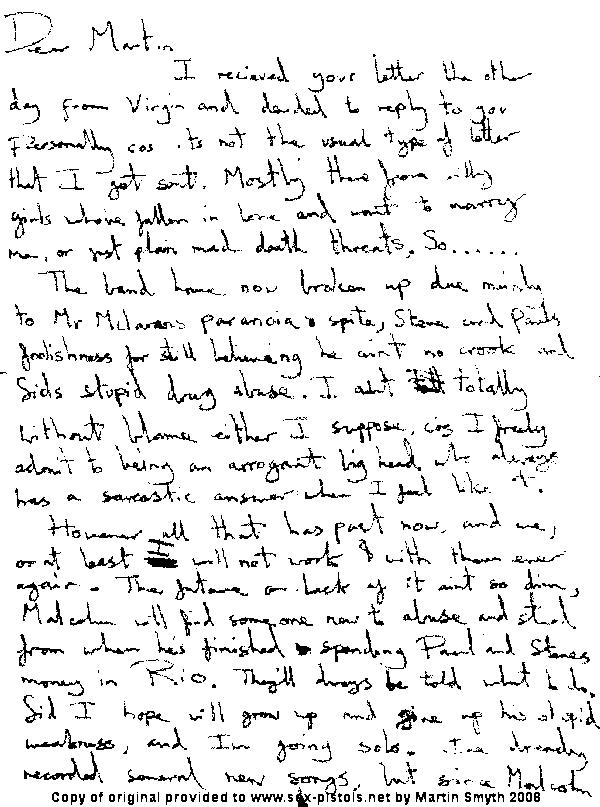
Although the counterculture movement came to an end when the war did in 1975, the media kept the hippie image alive, albeit with shallow depictions. Concerningly,media coverage often fails to include diverse individuals who shaped the counterculture.
Minorities could be defined as part of the counterculture based on the struggles they experienced but were not included in the label hippies because hippies were mainly categorized as white middle class individuals. African Americans and Native Americans were fighting for the civilrights they were deprived of due to their race. Immigrant youth were fighting for the same caus-
With the heyday of television and FM radios, businesses spread rock music’s sounds and ideologies and sold counterculture-related products such as magazines and clothing. As the hippie rage moved from San Francisco to Broadway with theatrical plays such as Hair, then went on to Vietnam where peaceand-love products were sent to boost soldiers’ morale, one might wonder how the spread of love influenced the concept of fighting (Kramer, 2013). While 1960’s musicians also revived folk music, banjos, guitars, and records were quickly being sold off the shelves. The music and its livelihood were dependent on consumerism .
